An Emerging Paradigm for ABCC5/MRP5 Function in Human Physiology
Abstract
1. Introduction
2. Endogenous Ligands
2.1. Cyclic Nucleotides
| Substrate Type | Substrate Identified | 2D Structure | References |
|---|---|---|---|
| Cyclic nucleotides | cAMP and cGMP Transport shown via vesicular transport assays with 3[H]-labelled substrates. Uptake quantified by scintillation counting of radio-labelled substrates. | cGMP cAMP  | [18,19] |
| Nucleotide analogues | 6-mercaptopurine, 6-thioguanine, and PMEA Transport shown via accumulation and efflux assays, and functional assays showing increased cellular resistance to cytotoxic drugs when overexpressing MRP5. | PMEA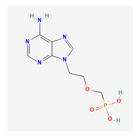 | [24] |
| Glutamate conjugates/analogues | NAAG, NAAG2, BCG, BCG2 Asp-Gly-Glu, SAICAr, NAG, Val-Asp-Gly-Glu, and NAA NMDA, kainic acid, and domoic acid ZJ43 Transport shown via vesicular transport assays. Substrate uptake quantified by LC/MS. | NAAG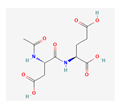 | [25] |
| Metabolite | N-lactoyl amino acids Transport implied via functional assay showing reduced cellular growth of haem-dependent yeast cells overexpressing MRP5. | N-lactoyl-phenylalanine | [26] |
| Iron homeostasis | Haem Transport implied via functional assay showing reduced cellular growth of haem-dependent yeast cells overexpressing MRP5. | 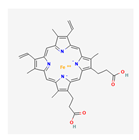 | [27] |
| Folates | Folic acid Transport shown via vesicular transport assays with 3[H]-labelled substrates. Uptake quantified by scintillation counting of radio-labelled substrates. | 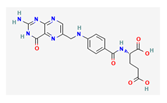 | [19] |
| Antifolates | Methotrexate and methotrexate polyglutamine metabolites Transport shown via vesicular transport assays with 3[H]-labelled substrates. Uptake quantified by scintillation counting of radio-labelled substrates. | Methotrexate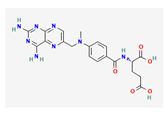 | [19] |
2.2. Glutamate Conjugates
2.3. Haem
3. ABC Paralogs
4. Metabolism and Adipocyte Differentiation
5. ABCC5 Structure
6. Conclusions
Funding
Conflicts of Interest
Abbreviations
| NAAG | N-acetyl-aspartyl-glutamate |
| ABCC5 | Human ABCC5 protein |
| ABCC5 | Human ABCC5 gene |
| Abcc5 | Abcc5 protein in non-human model systems |
| Abcc5 BCG | Abcc5 gene in non-human model systems β-citryl-glutamate |
References
- Thomas, C.; Aller, S.G.; Beis, K.; Carpenter, E.P.; Chang, G.; Chen, L.; Dassa, E.; Dean, M.; Ekiert, D.; Ford, R.; et al. Structural and functional diversity calls for a new classification of ABC transporters. FEBS Lett. 2020, 594, 3767–3775. [Google Scholar] [CrossRef]
- Cole, S.P. Patterns of cross-resistance in a multidrug-resistant small-cell lung carcinoma cell line. Cancer Chemother. Pharmacol. 1990, 26, 250–256. [Google Scholar] [CrossRef]
- Baltira, C.; Aronica, E.; Elmquist, W.F.; Langer, O.; Loscher, W.; Sarkaria, J.N.; Wesseling, P.; de Gooijer, M.C.; van Tellingen, O. The impact of ATP-binding cassette transporters in the diseased brain: Context matters. Cell Rep. Med. 2024, 5, 101609. [Google Scholar] [CrossRef] [PubMed]
- Patton, B.L.; Zhu, P.; ElSheikh, A.; Driggers, C.M.; Shyng, S.L. Dynamic duo: Kir6 and SUR in K(ATP) channel structure and function. Channels 2024, 18, 2327708. [Google Scholar] [CrossRef]
- Bose, S.J.; Krainer, G.; Ng, D.R.S.; Schenkel, M.; Shishido, H.; Yoon, J.S.; Haggie, P.M.; Schlierf, M.; Sheppard, D.N.; Skach, W.R. Towards next generation therapies for cystic fibrosis: Folding, function and pharmacology of CFTR. J. Cyst. Fibros. 2020, 19 (Suppl. S1), S25–S32. [Google Scholar] [CrossRef]
- Jin, D.; Ni, T.T.; Sun, J.; Wan, H.; Amack, J.D.; Yu, G.; Fleming, J.; Chiang, C.; Li, W.; Papierniak, A.; et al. Prostaglandin signalling regulates ciliogenesis by modulating intraflagellar transport. Nat. Cell Biol. 2014, 16, 841–851. [Google Scholar] [CrossRef]
- Pan, Y.; Wu, M.; Cai, H. Role of ABCC5 in cancer drug resistance and its potential as a therapeutic target. Front. Cell Dev. Biol. 2024, 12, 1446418. [Google Scholar] [CrossRef]
- Chen, H.; Luo, J.; Chen, S.; Shi, B.; Zheng, X.; Ji, H.; Zhang, X.; Yin, Y.; Du, K.; Ding, J.; et al. Non-drug efflux function of ABCC5 promotes enzalutamide resistance in castration-resistant prostate cancer via upregulation of P65/AR-V7. Cell Death Discov. 2022, 8, 241. [Google Scholar] [CrossRef] [PubMed]
- Direk, K.; Lau, W.; Small, K.S.; Maniatis, N.; Andrew, T. ABCC5 transporter is a novel type 2 diabetes susceptibility gene in European and African American populations. Ann. Hum. Genet. 2014, 78, 333–344. [Google Scholar] [CrossRef] [PubMed]
- Mirzaeicheshmeh, E.; Zerrweck, C.; Centeno-Cruz, F.; Baca-Peynado, P.; Martinez-Hernandez, A.; García-Ortiz, H.; Contreras-Cubas, C.; Salas-Martínez, M.G.; Saldaña-Alvarez, Y.; Mendoza-Caamal, E.C.; et al. Alterations of DNA methylation during adipogenesis differentiation of mesenchymal stem cells isolated from adipose tissue of patients with obesity is associated with type 2 diabetes. Adipocyte 2021, 10, 493–504. [Google Scholar] [CrossRef]
- Laddha, A.P.; Wahane, A.; Bahal, R.; Manautou, J.E. Investigating the crosstalk between ABCC4 and ABCC5 in 3T3-L1 adipocyte differentiation. Front. Mol. Biosci. 2024, 11, 1498946. [Google Scholar] [CrossRef]
- Yu, D.; Li, J.; Wei, Q.; Zhu, C.; Zhang, X.; Li, X.; Guo, D. Trichosanthis Pericarpium injection ameliorates non-alcoholic fatty liver disease via inhibiting the KLF6/ABCC5 pathway in mice. Phytomedicine 2025, 145, 156998. [Google Scholar] [CrossRef]
- Chen, M.B.; Jiang, X.; Quake, S.R.; Sudhof, T.C. Persistent transcriptional programmes are associated with remote memory. Nature 2020, 587, 437–442, Correction in Nature 2025, 644, E37. [Google Scholar] [CrossRef]
- de Jong, T.V.; Kim, P.; Guryev, V.; Mulligan, M.K.; Williams, R.W.; Redei, E.E.; Chen, H. Whole genome sequencing of nearly isogenic WMI and WLI inbred rats identifies genes potentially involved in depression and stress reactivity. Sci. Rep. 2021, 11, 14774. [Google Scholar] [CrossRef]
- Mohammadnejad, A.; Nygaard, M.; Li, S.; Zhang, D.; Xu, C.; Li, W.; Lund, J.; Christiansen, L.; Baumbach, J.; Christensen, K.; et al. Generalized correlation coefficient for genome-wide association analysis of cognitive ability in twins. Aging 2020, 12, 22457–22494. [Google Scholar] [CrossRef] [PubMed]
- Nies, A.T.; Jedlitschky, G.; Konig, J.; Herold-Mende, C.; Steiner, H.H.; Schmitt, H.P.; Keppler, D. Expression and immunolocalization of the multidrug resistance proteins, MRP1-MRP6 (ABCC1-ABCC6), in human brain. Neuroscience 2004, 129, 349–360. [Google Scholar] [CrossRef]
- Kool, M.; De Haas, M.; Scheffer, G.L.; Scheper, R.J.; Van Eijk, M.J.; Juijn, A.J.; Baas, F.; Borst, P. Analysis of expression of cMOAT (MRP2), MRP3, MRP4, and MRP5, homologues of the multidrug resistance-associated protein gene (MRP1), in human cancer cell lines. Cancer Res. 1997, 57, 3537–3547. [Google Scholar]
- Jedlitschky, G.; Burchell, B.; Keppler, D. The multidrug resistance protein 5 functions as an ATP-dependent export pump for cyclic nucleotides. J. Biol. Chem. 2000, 275, 30069–30074. [Google Scholar] [CrossRef] [PubMed]
- Wielinga, P.; Hooijberg, J.H.; Gunnarsdottir, S.; Kathmann, I.; Reid, G.; Zelcer, N.; van der Born, K.; de Haas, M.; van der Heijden, I.; Kaspers, G.; et al. The human multidrug resistance protein MRP5 transports folates and can mediate cellular resistance against antifolates. Cancer Res. 2005, 65, 4425–4430. [Google Scholar] [CrossRef] [PubMed]
- Shipp, L.E.; Hill, R.Z.; Moy, G.W.; Gokirmak, T.; Hamdoun, A. ABCC5 is required for cAMP-mediated hindgut invagination in sea urchin embryos. Development 2015, 142, 3537–3548. [Google Scholar] [CrossRef]
- Long, Y.; Li, Q.; Li, J.; Cui, Z. Molecular analysis, developmental function and heavy metal-induced expression of ABCC5 in zebrafish. Comp. Biochem. Physiol. B Biochem. Mol. Biol. 2011, 158, 46–55. [Google Scholar] [CrossRef] [PubMed]
- Long, Y.; Li, Q.; Zhong, S.; Wang, Y.; Cui, Z. Molecular characterization and functions of zebrafish ABCC2 in cellular efflux of heavy metals. Comp. Biochem. Physiol. C Toxicol. Pharmacol. 2011, 153, 381–391. [Google Scholar] [CrossRef]
- Gu, M.; Lynch, J.; Brecher, P. Nitric oxide increases p21(Waf1/Cip1) expression by a cGMP-dependent pathway that includes activation of extracellular signal-regulated kinase and p70(S6k). J. Biol. Chem. 2000, 275, 11389–11396. [Google Scholar] [CrossRef]
- Wijnholds, J.; Mol, C.A.A.M.; van Deemter, L.; de Haas, M.; Scheffer, G.L.; Baas, F.; Beijnen, J.H.; Scheper, R.J.; Hatse, S.; De Clercq, E.; et al. Multidrug-resistance protein 5 is a multispecific organic anion transporter able to transport nucleotide analogs. Proc. Natl. Acad. Sci. USA 2000, 97, 7476–7481. [Google Scholar] [CrossRef]
- Jansen, R.S.; Mahakena, S.; de Haas, M.; Borst, P.; van de Wetering, K. ATP-binding Cassette Subfamily C Member 5 (ABCC5) Functions as an Efflux Transporter of Glutamate Conjugates and Analogs. J. Biol. Chem. 2015, 290, 30429–30440. [Google Scholar] [CrossRef]
- Jansen, R.S.; Addie, R.; Merkx, R.; Fish, A.; Mahakena, S.; Bleijerveld, O.B.; Altelaar, M.; Ijlst, L.; Wanders, R.J.; Borst, P.; et al. N-lactoyl-amino acids are ubiquitous metabolites that originate from CNDP2-mediated reverse proteolysis of lactate and amino acids. Proc. Natl. Acad. Sci. USA. 2015, 112, 6601–6606. [Google Scholar] [CrossRef]
- Korolnek, T.; Zhang, J.; Beardsley, S.; Scheffer, G.L.; Hamza, I. Control of metazoan heme homeostasis by a conserved multidrug resistance protein. Cell Metab. 2014, 19, 1008–1019. [Google Scholar] [CrossRef] [PubMed]
- Aye, I.L.; Paxton, J.W.; Evseenko, D.A.; Keelan, J.A. Expression, localisation and activity of ATP binding cassette (ABC) family of drug transporters in human amnion membranes. Placenta 2007, 28, 868–877. [Google Scholar] [CrossRef] [PubMed]
- Manceau, S.; Giraud, C.; Decleves, X.; Scherrmann, J.M.; Artiguebieille, F.; Goffinet, F.; Chappuy, H.; Vinot, C.; Tréluyer, J. ABC drug transporter and nuclear receptor expression in human cytotrophoblasts: Influence of spontaneous syncytialization and induction by glucocorticoids. Placenta 2012, 33, 927–932. [Google Scholar] [CrossRef]
- Zu Schwabedissen, H.E.M.; Grube, M.; Heydrich, B.; Linnemann, K.; Fusch, C.; Kroemer, H.K.; Jedlitschky, G. Expression, localization, and function of MRP5 (ABCC5), a transporter for cyclic nucleotides, in human placenta and cultured human trophoblasts: Effects of gestational age and cellular differentiation. Am. J. Pathol. 2005, 166, 39–48. [Google Scholar] [CrossRef]
- Nongpiur, M.E.; Khor, C.C.; Jia, H.; Cornes, B.K.; Chen, L.J.; Qiao, C.; Nair, K.S.; Cheng, C.-Y.; Xu, L.; George, R.; et al. ABCC5, a gene that influences the anterior chamber depth, is associated with primary angle closure glaucoma. PLoS Genet. 2014, 10, e1004089, Erratum in PLoS Genet. 2014, 10, e1004352. [Google Scholar] [CrossRef] [PubMed]
- Cyranka, M.; Veprik, A.; McKay, E.J.; van Loon, N.; Thijsse, A.; Cotter, L.; Hare, N.; Saibudeen, A.; Lingam, S.; Pires, E.; et al. Abcc5 Knockout Mice Have Lower Fat Mass and Increased Levels of Circulating GLP-1. Obesity 2019, 27, 1292–1304. [Google Scholar] [CrossRef]
- Banks, G.; Cyranka, M.; Vedovato, N.; Meller, C.; Rawnsley, A.; Mann, E.O.; Stewart, M.; de Wet, H. The murine ATP-binding cassette transporter C5 (Abcc5/MRP5/cMOAT) plays a role in memory consolidation, circadian rhythm regulation and glutamatergic signalling. Transl. Psychiatry 2025, 15, 218. [Google Scholar] [CrossRef]
- Neale, J.H.; Yamamoto, T. N-acetylaspartylglutamate (NAAG) and glutamate carboxypeptidase II: An abundant peptide neurotransmitter-enzyme system with multiple clinical applications. Prog. Neurobiol. 2020, 184, 101722. [Google Scholar] [CrossRef]
- Puttfarcken, P.S.; Handen, J.S.; Montgomery, D.T.; Coyle, J.T.; Werling, L.L. N-acetyl-aspartylglutamate modulation of N-methyl-D-aspartate-stimulated [3H]norepinephrine release from rat hippocampal slices. J. Pharmacol. Exp. Ther. 1993, 266, 796–803. [Google Scholar] [CrossRef]
- Sekiguchi, M.; Okamoto, K.; Sakai, Y. Low-concentration N-acetylaspartylglutamate suppresses the climbing fiber response of Purkinje cells in guinea pig cerebellar slices and the responses to excitatory amino acids of Xenopus laevis oocytes injected with cerebellar mRNA. Brain Res. 1989, 482, 87–96. [Google Scholar] [CrossRef]
- Westbrook, G.L.; Mayer, M.L.; Namboodiri, M.A.; Neale, J.H. High concentrations of N-acetylaspartylglutamate (NAAG) selectively activate NMDA receptors on mouse spinal cord neurons in cell culture. J. Neurosci. 1986, 6, 3385–3392. [Google Scholar] [CrossRef]
- Bergeron, R.; Coyle, J.T. NAAG, NMDA receptor and psychosis. Curr. Med. Chem. 2012, 19, 1360–1364. [Google Scholar] [CrossRef]
- Lewis, D.A.; Sweet, R.A. Schizophrenia from a neural circuitry perspective: Advancing toward rational pharmacological therapies. J. Clin. Investig. 2009, 119, 706–716. [Google Scholar] [CrossRef] [PubMed]
- Nakazawa, K.; Jeevakumar, V.; Nakao, K. Spatial and temporal boundaries of NMDA receptor hypofunction leading to schizophrenia. NPJ Schizophr. 2017, 3, 7. [Google Scholar] [CrossRef] [PubMed]
- Nakazawa, K.; Sapkota, K. The origin of NMDA receptor hypofunction in schizophrenia. Pharmacol. Ther. 2020, 205, 107426. [Google Scholar] [CrossRef] [PubMed]
- Trubetskoy, V.; Pardinas, A.F.; Qi, T.; Panagiotaropoulou, G.; Awasthi, S.; Bigdeli, T.B.; Bryois, J.; Chen, C.-Y.; Dennison, C.A.; Hall, L.S.; et al. Mapping genomic loci implicates genes and synaptic biology in schizophrenia. Nature 2022, 604, 502–508. [Google Scholar] [CrossRef] [PubMed]
- Hamada-Kanazawa, M.; Kouda, M.; Odani, A.; Matsuyama, K.; Kanazawa, K.; Hasegawa, T.; Narahara, M.; Miyake, M. Beta-Citryl-L-glutamate is an endogenous iron chelator that occurs naturally in the developing brain. Biol. Pharm. Bull. 2010, 33, 729–737. [Google Scholar] [CrossRef] [PubMed][Green Version]
- Hamada-Kanazawa, M.; Narahara, M.; Takano, M.; Min, K.S.; Tanaka, K.; Miyake, M. Beta-Citryl-L-glutamate acts as an iron carrier to activate aconitase activity. Biol. Pharm. Bull. 2011, 34, 1455–1464. [Google Scholar] [CrossRef][Green Version]
- Chambers, I.G.; Kumar, P.; Lichtenberg, J.; Wang, P.; Yu, J.; Phillips, J.D.; Kane, M.A.; Bodine, D.; Hamza, I. MRP5 and MRP9 play a concerted role in male reproduction and mitochondrial function. Proc. Natl. Acad. Sci. USA 2022, 119, e2111617119. [Google Scholar] [CrossRef]
- Duca, F.A.; Waise, T.M.Z.; Peppler, W.T.; Lam, T.K.T. The metabolic impact of small intestinal nutrient sensing. Nat. Commun. 2021, 12, 903. [Google Scholar] [CrossRef]
- Cyranka, M.; Monfeuga, T.; Vedovato, N.; Larabee, C.M.; Chandran, A.; Toledo, E.M.; de Wet, H. NMDA Receptor Antagonists Increase the Release of GLP-1 From Gut Endocrine Cells. Front. Pharmacol. 2022, 13, 861311. [Google Scholar] [CrossRef]
- Garbutt, P.; Cyranka, M.; Michl, J.; Maejima, Y.; Vedovato, N.; Shimomura, K.; Swietach, P.; de Wet, H. The release of GLP-1 from gut L cells is inhibited by low extracellular pH. Obesity 2024, 32, 1819–1824. [Google Scholar] [CrossRef]
- Donepudi, A.C.; Lee, Y.; Lee, J.Y.; Schuetz, J.D.; Manautou, J.E. Multidrug resistance-associated protein 4 (Mrp4) is a novel genetic factor in the pathogenesis of obesity and diabetes. FASEB J. 2021, 35, e21304. [Google Scholar] [CrossRef]
- Huang, Y.; Xue, C.; Bu, R.; Wu, C.; Li, J.; Zhang, J.; Chen, J.; Shi, Z.; Chen, Y.; Wang, Y.; et al. Inhibition and transport mechanisms of the ABC transporter hMRP5. Nat. Commun. 2024, 15, 4811. [Google Scholar] [CrossRef]
- Goddard, T.D.; Huang, C.C.; Meng, E.C.; Pettersen, E.F.; Couch, G.S.; Morris, J.H.; Ferrin, T.E. UCSF ChimeraX: Meeting modern challenges in visualization and analysis. Protein Sci. 2018, 27, 14–25. [Google Scholar] [CrossRef]
- Maglic, J.B.; Lavendomme, R. MoloVol: An easy-to-use program for analyzing cavities, volumes and surface areas of chemical structures. J. Appl. Crystallogr. 2022, 55 Pt 4, 1033–1044. [Google Scholar] [CrossRef]
- Muraki, N.; Aono, S. Structural Basis for Heme Recognition by HmuT Responsible for Heme Transport to the Heme Transporter in Corynebacterium glutamicum. Chem. Lett. 2015, 45, 24–26. [Google Scholar] [CrossRef]
- Than, M.E.; Hof, P.; Huber, R.; Bourenkov, G.P.; Bartunik, H.D.; Buse, G.; Soulimane, T. Thermus thermophilus cytochrome-c552: A new highly thermostable cytochrome-c structure obtained by MAD phasing. J. Mol. Biol. 1997, 271, 629–644. [Google Scholar] [CrossRef]
- Schmiege, P.; Donnelly, L.; Elghobashi-Meinhardt, N.; Lee, C.H.; Li, X. Structure and inhibition of the human lysosomal transporter Sialin. Nat. Commun. 2024, 15, 4386. [Google Scholar] [CrossRef]
- Klusak, V.; Barinka, C.; Plechanovova, A.; Mlcochova, P.; Konvalinka, J.; Rulisek, L.; Lubkowski, J. Reaction mechanism of glutamate carboxypeptidase II revealed by mutagenesis, X-ray crystallography, and computational methods. Biochemistry 2009, 48, 4126–4138. [Google Scholar] [CrossRef] [PubMed]
- Chen, C.; Ke, J.; Zhou, X.E.; Yi, W.; Brunzelle, J.S.; Li, J.; Yong, E.-L.; Xu, H.E.; Melcher, K. Structural basis for molecular recognition of folic acid by folate receptors. Nature 2013, 500, 486–489. [Google Scholar] [CrossRef] [PubMed]
- Reyes, V.M.; Sawaya, M.R.; Brown, K.A.; Kraut, J. Isomorphous crystal structures of Escherichia coli dihydrofolate reductase complexed with folate, 5-deazafolate, and 5,10-dideazatetrahydrofolate: Mechanistic implications. Biochemistry 1995, 34, 2710–2723. [Google Scholar] [CrossRef] [PubMed]
- Peng, Y.; Feng, Q.; Wilk, D.; Adjei, A.A.; Salavaggione, O.E.; Weinshilboum, R.M.; Yee, V.C. Structural basis of substrate recognition in thiopurine s-methyltransferase. Biochemistry 2008, 47, 6216–6225. [Google Scholar] [CrossRef]
- Cao, H.; Pauff, J.M.; Hille, R. Substrate orientation and catalytic specificity in the action of xanthine oxidase: The sequential hydroxylation of hypoxanthine to uric acid. J. Biol. Chem. 2010, 285, 28044–28053. [Google Scholar] [CrossRef]
- Chu, S.Y.; Tordova, M.; Gilliland, G.L.; Gorshkova, I.; Shi, Y.; Wang, S.; Schwarz, F.P. The structure of the T127L/S128A mutant of cAMP receptor protein facilitates promoter site binding. J. Biol. Chem. 2001, 276, 11230–11236. [Google Scholar] [CrossRef] [PubMed]
- Kurinov, I.V.; Rajamohan, F.; Uckun, F.M. High resolution X-ray structure and potent anti-HIV activity of recombinant dianthin antiviral protein. Arzneimittelforschung 2004, 54, 692–702. [Google Scholar] [CrossRef] [PubMed]
- Welch, W.; Sage, C.R.; Stout, T.J.; Klein, T.; Ruppert, J.; Stroud, R.M.; Jain, A. Discovery of Thymidylate Synthase Inhibitors Using Flexible Docking and an Empirically Tuned Scoring Function; RCSB Protein Data Bank: Piscataway, NJ, USA, 1997. [Google Scholar] [CrossRef]
- Li, R.; Sirawaraporn, R.; Chitnumsub, P.; Sirawaraporn, W.; Wooden, J.; Athappilly, F.; Turley, S.; Hol, W.G. Three-dimensional structure of M. tuberculosis dihydrofolate reductase reveals opportunities for the design of novel tuberculosis drugs. J. Mol. Biol. 2000, 295, 307–323. [Google Scholar] [CrossRef] [PubMed]
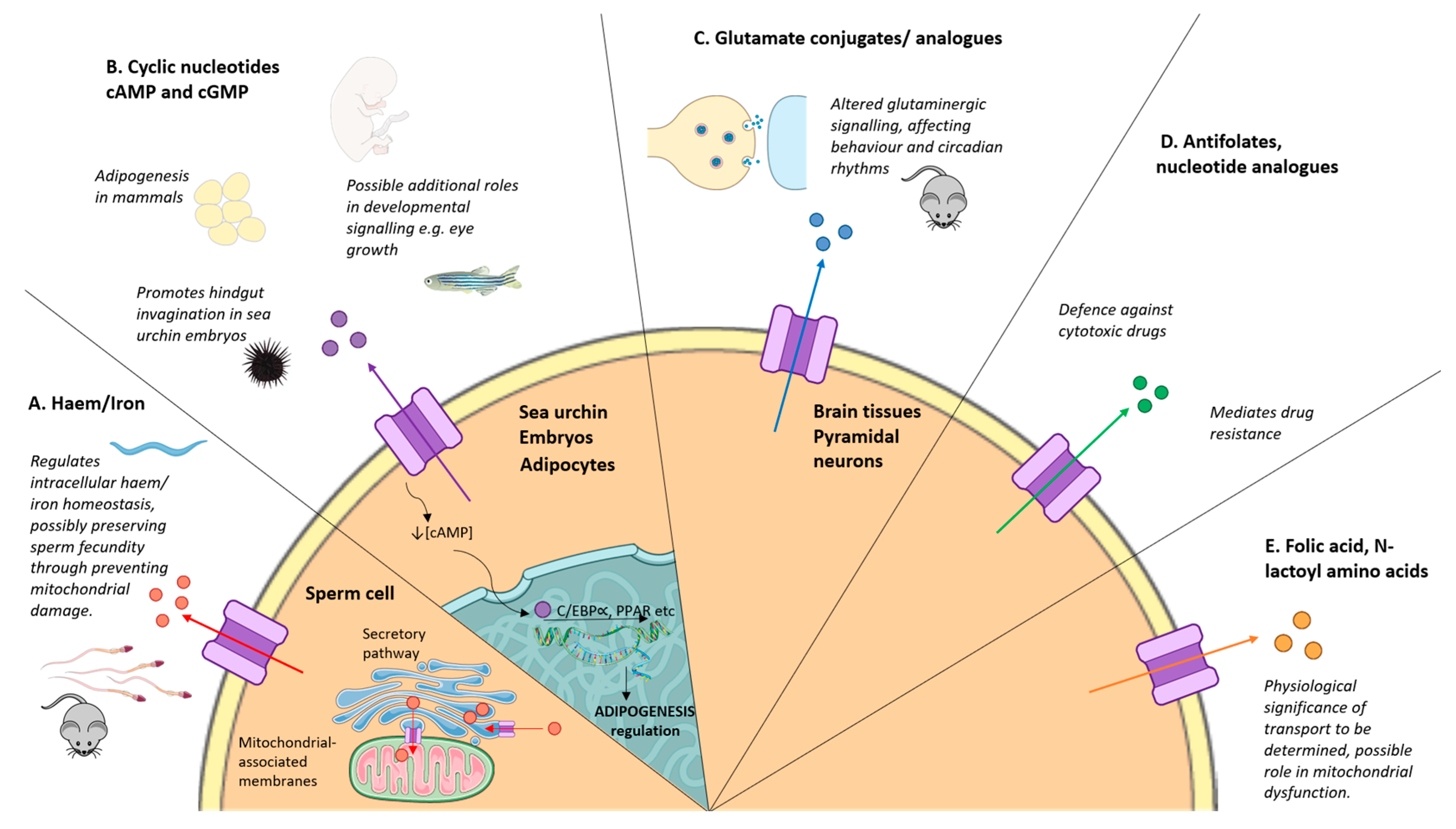

| Ligand | Volume (Å3) | PDB |
|---|---|---|
| C46-S64 | 1559 | 8WI0 [50] |
| Haem | 661/512 | 5AZ3 [53]/1C52 [54] |
| NAAG | 232/230 | 8U3G [55]/3BXM [56] |
| Folic acid | 349/339 | 4LRH [57]/1DYI [58] |
| 6-mercaptopurine | 118/120 | 3BGD [59]/3NS1 [60] |
| cAMP | 230/235 | 1HW5 [61]/1LPC [62] |
| Methotrexate | 368/364 | 1AXW [63]/1DF7 [64] |
Disclaimer/Publisher’s Note: The statements, opinions and data contained in all publications are solely those of the individual author(s) and contributor(s) and not of MDPI and/or the editor(s). MDPI and/or the editor(s) disclaim responsibility for any injury to people or property resulting from any ideas, methods, instructions or products referred to in the content. |
© 2025 by the authors. Licensee MDPI, Basel, Switzerland. This article is an open access article distributed under the terms and conditions of the Creative Commons Attribution (CC BY) license (https://creativecommons.org/licenses/by/4.0/).
Share and Cite
Chinoy, J.; Meller, C.; de Wet, H. An Emerging Paradigm for ABCC5/MRP5 Function in Human Physiology. Int. J. Mol. Sci. 2025, 26, 9211. https://doi.org/10.3390/ijms26189211
Chinoy J, Meller C, de Wet H. An Emerging Paradigm for ABCC5/MRP5 Function in Human Physiology. International Journal of Molecular Sciences. 2025; 26(18):9211. https://doi.org/10.3390/ijms26189211
Chicago/Turabian StyleChinoy, Jenai, Charlotte Meller, and Heidi de Wet. 2025. "An Emerging Paradigm for ABCC5/MRP5 Function in Human Physiology" International Journal of Molecular Sciences 26, no. 18: 9211. https://doi.org/10.3390/ijms26189211
APA StyleChinoy, J., Meller, C., & de Wet, H. (2025). An Emerging Paradigm for ABCC5/MRP5 Function in Human Physiology. International Journal of Molecular Sciences, 26(18), 9211. https://doi.org/10.3390/ijms26189211






